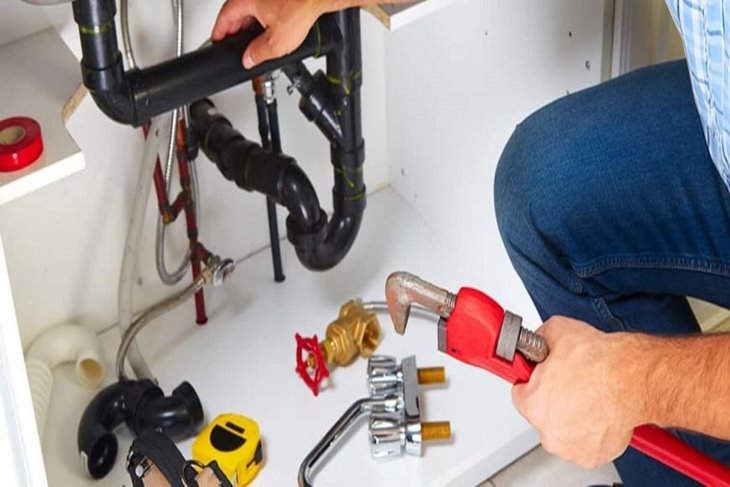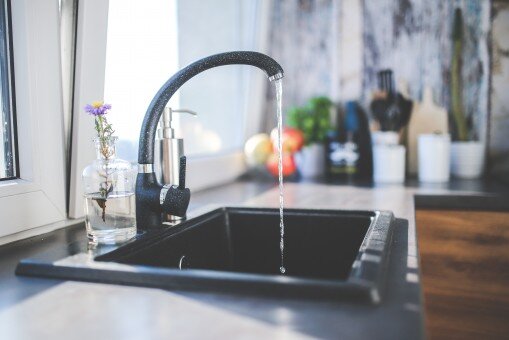Just about everyone will have their own theory about 7 Plumbing Industry Trends You Need To Know.

Introduction
The pipes market is undertaking a transformative phase driven by technical improvements and growing issues for sustainability and efficiency. This short article checks out emerging fads and technologies forming the future of pipes.
Governing Landscape
Regulative structures play a critical function fit the fostering of plumbing advancements, with criteria and codes controling everything from water performance to product safety and security. As technologies remain to progress, regulatory bodies have to adapt to make certain customer defense and ecological stewardship.
Future Overview
The future of plumbing is characterized by continued development and integration with various other sectors such as IoT, renewable resource, and building automation. By embracing sustainable techniques, leveraging arising technologies, and prioritizing user-centric layout, the pipes sector is positioned to resolve the developing needs of culture while minimizing its environmental footprint.
Increased Fact in Plumbing
Enhanced Fact (AR) innovation is transforming plumbing by supplying technicians with real-time visual guidance for fixing and repair work jobs. AR-enabled smart glasses or mobile applications overlay electronic information onto the physical setting, assisting plumbing professionals envision pipeline designs, determine covert leaks, and carry out repair work with accuracy.
Effect of 3D Printing
The advent of 3D printing has introduced brand-new possibilities in producing plumbing parts. From custom-made components to intricate pipeline installations, 3D printing allows for rapid prototyping and on-demand manufacturing, minimizing preparations and enabling greater customization in pipes design.
Health And Wellness Features
In action to heightened concerns for health and safety, plumbing fixtures are including attributes such as antimicrobial surface areas, touchless operation, and self-cleaning systems. These innovations not just boost health yet also promote customer comfort and ease.
Hygiene-focused Components
Touchless taps, self-sanitizing toilets, and antimicrobial surface areas are coming to be significantly common in residential and industrial settings, minimizing the risk of bacterium transmission and advertising a cleaner, much healthier environment.
Water Top Quality Monitoring
Advancements in water high quality surveillance modern technologies allow home owners to keep track of the purity and safety of their water supply in real-time. Smart water high quality sensors can spot impurities, pH degrees, and temperature variations, empowering customers to take aggressive measures to ensure water safety.
Remote Pipes Services
Remote diagnostics and digital support are revolutionizing the means plumbing services are supplied. Via video clip conferencing and remote gain access to modern technologies, plumbing technicians can troubleshoot issues, give advice for DIY repairs, and even do remote inspections, providing greater access and benefit to home owners.
Challenges and Opportunities
While plumbing developments hold tremendous promise, they likewise present obstacles such as information personal privacy issues, regulatory conformity, and the requirement for workforce training. Dealing with these challenges calls for cooperation between sector stakeholders and regulatory bodies to ensure secure and accountable application of new technologies.
Smart Pipes Systems
Including smart modern technology right into pipes systems makes it possible for remote monitoring, leakage discovery, and automated maintenance. Smart sensors and IoT (Net of Things) tools permit property owners and plumbings to monitor water usage and identify problems in real-time, causing extra effective source administration and proactive maintenance.
Water Effectiveness Solutions
With boosting focus on water conservation, ingenious solutions are being developed to decrease water wastefulness in pipes systems. High-efficiency components, greywater recycling systems, and smart watering controllers are amongst the innovations assisting consumers lower their water impact while preserving comfort and convenience.
Sustainable Materials
The shift in the direction of sustainability encompasses plumbing products, with a growing preference for eco-friendly choices. Biodegradable piping materials, such as PEX (cross-linked polyethylene) and HDPE (high-density polyethylene), offer resilience and resistance to rust without jeopardizing ecological integrity.
Predictive Maintenance
Anticipating maintenance methods leverage information analytics and artificial intelligence algorithms to anticipate and protect against pipes concerns before they take place. By examining historic information and performance metrics, anticipating maintenance formulas can identify patterns and abnormalities, making it possible for aggressive interventions to avoid costly fixings and disturbances.
Conclusion
To conclude, the future of plumbing is specified by a merging of modern technology, sustainability, and user-centric style. By welcoming smart services, lasting materials, and positive maintenance techniques, the plumbing industry can boost performance, advertise safety, and contribute to an extra lasting future.
The Future of Plumbing: Trends and Innovations to Watch
Introduction to Future Plumbing Trends
The future of plumbing is being shaped by several key factors, including technological advancements, environmental concerns, and changing consumer expectations. These factors are driving the development of new products, services, and practices that enhance the efficiency, sustainability, and convenience of plumbing systems.
Key Trends and Innovations in Plumbing
Smart Plumbing Systems: The integration of smart technology into plumbing systems is transforming the way we manage water usage and detect issues. Smart leak detectors, automated water shut-off valves, and smart faucets are just a few examples of how technology is enhancing plumbing systems. These devices provide real-time data and remote control capabilities, allowing homeowners to monitor and manage their water usage more effectively. Water Conservation and Efficiency: With increasing concerns about water scarcity, there is a growing emphasis on water conservation and efficiency. Innovations such as low-flow fixtures, greywater recycling systems, and rainwater harvesting are becoming more popular. Plumbers are adopting these technologies to help customers reduce their water consumption and save on utility bills. Sustainable Materials: The use of sustainable materials in plumbing systems is gaining traction. This includes the adoption of recyclable and biodegradable materials, as well as the use of non-toxic and eco-friendly products. Sustainable materials help reduce the environmental impact of plumbing systems and promote long-term sustainability. Energy-Efficient Water Heaters: Advances in water heating technology are leading to the development of more energy-efficient systems. Tankless water heaters, solar water heaters, and heat pump water heaters are becoming more prevalent. These systems offer significant energy savings and reduce the carbon footprint of homes and businesses. Trenchless Technology: Trenchless technology is revolutionizing the way plumbing repairs and installations are conducted. This method allows for the repair or replacement of pipes without extensive excavation, minimizing disruption and reducing costs. Techniques such as pipe bursting and cured-in-place pipe (CIPP) lining are gaining popularity. Health and Safety: The focus on health and safety is driving innovations in plumbing systems. Touchless faucets and fixtures, antimicrobial materials, and improved water filtration systems are being developed to enhance hygiene and protect public health. Plumbers are adopting these innovations to meet the growing demand for safer and healthier plumbing solutions. Remote Diagnostics and Monitoring: The ability to diagnose and monitor plumbing systems remotely is becoming increasingly important. Remote diagnostic tools and sensors allow plumbers to identify issues and perform maintenance without the need for on-site visits. This enhances efficiency and reduces the need for costly emergency repairs. Impact of Future Trends on the Plumbing Industry
Enhanced Efficiency: The adoption of smart technology and energy-efficient systems will enhance the efficiency of plumbing systems. This will lead to reduced water and energy consumption, lower utility bills, and improved performance. Sustainability: The focus on sustainability will drive the development and adoption of eco-friendly plumbing solutions. This will contribute to the conservation of natural resources, reduction of waste, and protection of the environment. Improved Customer Experience: The integration of technology and innovative solutions will improve the customer experience. Homeowners will have greater control over their plumbing systems, access to real-time data, and the ability to manage their water usage more effectively. Increased Demand for Skilled Plumbers: The adoption of new technologies and materials will require plumbers to acquire new skills and expertise. There will be an increased demand for skilled plumbers who are knowledgeable about the latest trends and innovations. Cost Savings: The use of efficient and sustainable plumbing solutions will result in cost savings for both homeowners and businesses. Reduced water and energy consumption, lower maintenance costs, and fewer emergency repairs will contribute to overall affordability. Preparing for the Future of Plumbing
Stay Informed: Keep up-to-date with the latest trends and innovations in the plumbing industry. Attend industry conferences, participate in training programs, and engage with manufacturers to stay informed. Invest in Training: Ensure that you and your team are trained in the latest technologies and installation techniques. This will enable you to offer cutting-edge solutions to your customers and stay competitive in the market. Promote Sustainable Solutions: Highlight the benefits of eco-friendly and energy-efficient plumbing solutions to your customers. Educate them about the advantages of adopting sustainable practices and products. Leverage Technology: Embrace smart technology and remote diagnostic tools to enhance your services. Offer remote monitoring and maintenance options to provide added convenience and value to your customers. Collaborate with Manufacturers: Partner with manufacturers of innovative plumbing products to gain access to the latest solutions and technical support. This can also provide opportunities for joint marketing efforts. Focus on Customer Education: Educate your customers about the benefits and functionality of new plumbing technologies. Provide guidance on how to use smart systems and maintain sustainable plumbing solutions. Conclusion
The future of plumbing is being shaped by exciting trends and innovations that promise to enhance efficiency, sustainability, and convenience. By staying informed and embracing these changes, plumbers can provide superior services to their customers and contribute to a more sustainable future. The adoption of smart technology, sustainable materials, and energy-efficient systems will drive the evolution of the plumbing industry, creating new opportunities and challenges. By preparing for the future, plumbers can ensure their success in a rapidly changing market.

I hope you enjoyed reading our excerpt on . Thanks a ton for taking the time to read our article. Are you aware of another person who is excited by the topic? Do not hesitate to share it. I cherish your readership.
Here
 Devin Ratray Then & Now!
Devin Ratray Then & Now! Jenna Von Oy Then & Now!
Jenna Von Oy Then & Now! Mike Vitar Then & Now!
Mike Vitar Then & Now! Pierce Brosnan Then & Now!
Pierce Brosnan Then & Now! Peter Billingsley Then & Now!
Peter Billingsley Then & Now!